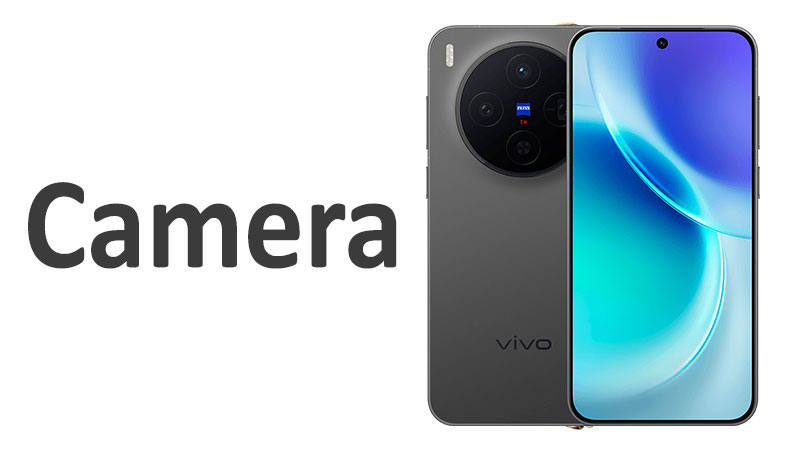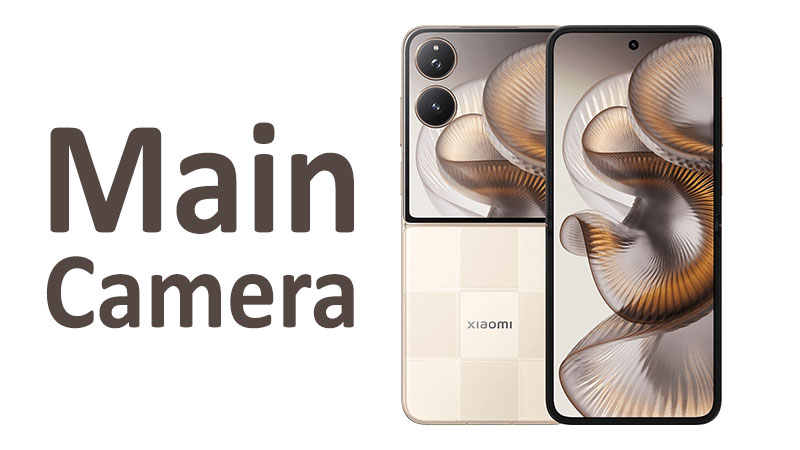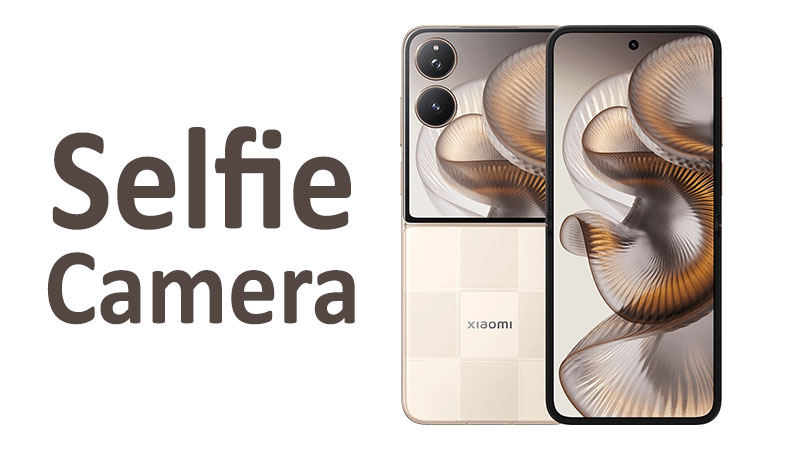The vivo X300 Camera review begins with an examination of its truly impressive photographic system. The phone boasts a powerful triple-lens setup anchored by a groundbreaking 200 MP main sensor. This advanced hardware is finely tuned by the renowned Zeiss brand. The X300 promises exceptional image quality across all shooting conditions. It aims to redefine mobile photography standards for flagship devices. We will thoroughly analyze each lens, its features, and its performance. This guide will help you understand the camera’s full potential and value.
The 200 MP Main Wide Camera: Detail and Technology
The cornerstone of the vivo X300’s imaging system is its primary wide-angle camera. This sensor captures images at a massive 200 MP resolution. This high megapixel count is a key feature for extreme detail capture. The lens features a wide f/1.7 aperture. This large opening allows plenty of light to reach the sensor. The effective focal length is 23 mm. This provides a versatile, standard wide field of view.
Sensor Size and Pixel Binning
The physical sensor size measures 1/1.4″. This is a large size for a modern smartphone camera. A larger sensor gathers more light efficiently. This improves image quality significantly in challenging low-light environments. Each individual pixel measures 0.56 µm. This small size is typical for high-resolution sensors.
The X300 uses a process called pixel binning. This technology combines multiple small pixels into one larger, virtual pixel. For instance, it can merge 16 pixels into one 12.5 MP image. This process dramatically improves light sensitivity. It reduces image noise in the resulting final photograph. Users get sharp, bright photos even in dim settings. The full 200 MP mode is reserved for maximum detail when light is abundant.
Stability and Focusing Technology
The main lens includes Optical Image Stabilization, known as OIS. OIS physically moves the lens element to counteract hand tremors. This is critical for capturing sharp photos in low light without blur. OIS also significantly improves video stability.
Phase Detection Autofocus, or PDAF, ensures rapid and accurate focusing. This advanced system measures distance using subtle light phase differences. It locks onto subjects almost instantaneously. This high-speed focus is necessary for capturing fast-moving action. Laser AF further assists the PDAF system. The laser measures distance quickly in low-contrast scenes. This combination provides professional-grade focusing accuracy.
Specialized Comparison: Megapixel Wars
The X300’s 200 MP sensor competes directly against flagship 108 MP and 50 MP rivals. The primary advantage is superior cropping flexibility. Users can zoom into a 200 MP image heavily without losing much detail. Rivals cannot match this cropping potential.
However, some competitors use slightly larger sensors overall. Larger sensors can sometimes offer better pure low-light performance. The X300’s excellent f/1.7 aperture and intelligent pixel binning compensate well. The 200 MP sensor provides a clear edge in well-lit conditions. It achieves extremely high resolving power for landscape and detailed shots.
Pros and Cons of the Main Camera
A key pro is the exceptional image detail offered by the 200 MP resolution. The fast f/1.7 aperture is another major advantage for low-light photography. OIS and PDAF guarantee sharp focus and stable images every time.
A minor con is the large file size generated by the full 200 MP shots. These files consume significant storage space quickly. Processing time for these massive images can also take slightly longer. However, most users will rely on the faster, binned 12.5 MP images.
The Periscope Telephoto Lens: 3x Optical Zoom
The vivo X300 integrates a dedicated periscope telephoto camera. This is an essential feature for capturing distant subjects clearly. This lens offers 3x optical zoom capability. Optical zoom uses physical glass elements to magnify the image. This maintains quality better than digital magnification.
Telephoto Specifications
This sensor captures images at 50 MP resolution. The lens features a moderate f/2.6 aperture. This is standard for telephoto lenses, which require more light path complexity. The effective focal length is 70 mm. This provides a natural, flattering perspective for portrait photography. The sensor size is 1/1.95″. This is quite large for a telephoto sensor, which is beneficial.
The periscope mechanism reflects light through prisms sideways within the phone body. This allows for a longer focal length without making the phone excessively thick. This engineering solution provides the true 3x optical zoom. PDAF and OIS are both included on this telephoto lens. OIS is vital for steady, sharp zoom shots. Hand shake becomes greatly amplified at 3x magnification.
Zoom Performance and Versatility
The 3x optical zoom is perfect for professional-looking portraits. It separates the subject clearly from the background without distortion. The high 50 MP resolution allows for further digital cropping past 3x. This creates excellent hybrid zoom results up to moderate levels.
Users can capture architectural details or wildlife from a distance easily. The image quality remains high thanks to the optical magnification. This lens adds significant creative versatility to the X300’s camera array. It is a critical component for any serious photographer.
Specialized Comparison: Telephoto Rivals
The X300’s 3x optical zoom competes well against many flagships. Some rivals offer a 5x or even 10x periscope zoom lens. These longer zooms provide more distant reach. However, the 3x zoom offers more versatility for portraiture. 3x is considered the sweet spot for headshots and half-body portraits.
The 50 MP high resolution sets the X300 apart from rivals with 10 MP or 12 MP telephoto sensors. The X300’s sensor captures significantly more detail. This allows for superior quality when using digital zoom past the 3x limit. The X300 trades maximum reach for exceptional detail at the most useful portrait distance.
Buyer Knowledge: Optical vs. Digital Zoom
Buyers must understand the difference between optical and digital zoom. Optical zoom, like the X300’s 3x, maintains image quality completely. Digital zoom merely enlarges a part of the captured image. This process drastically reduces detail and introduces softness. The X300’s camera is strong because it starts with a clear 3x optical base. Always prioritize using the optical zoom limits for the best possible results.
The 50 MP Ultrawide Camera: Perspective and Focus
The third lens in the X300’s versatile array is the 50 MP ultrawide camera. This lens dramatically expands the field of view. It is essential for capturing expansive landscapes and large group photos. It offers a 119∘ field of view, or FOV. This is equivalent to a 15 mm focal length. This wide angle creates a strong, dramatic sense of scale.
Ultrawide Specifications and AF
The ultrawide sensor boasts a high 50 MP resolution. This prevents the loss of detail common in lower-resolution ultrawide shots. The lens has an f/2.0 aperture. This is a respectable opening for an ultrawide lens. The sensor size is 1/2.76″. Each pixel measures 0.64 µm.
Crucially, this ultrawide lens includes Autofocus, or AF. Many competing ultrawide lenses use a fixed focus. Fixed focus limits their functionality severely. The X300’s AF allows the lens to focus closely on subjects. This capability enables macro photography with the ultrawide lens. Users can capture stunning close-ups of small objects.
Ultrawide Performance
The high resolution provides sharp, detailed photos across the entire frame. Software correction minimizes the distortion that is often seen at the edges of ultrawide shots. The 119∘ FOV is perfect for capturing dramatic city skylines. It is also excellent for photographing large interior spaces.
The inclusion of AF is a massive advantage for creative flexibility. It lets users pull focus and create compelling depth effects in ultrawide shots. This feature transforms the ultrawide lens from a basic tool into a powerful creative instrument.
Specialized Comparison: Ultrawide AF
The 50 MP resolution is a massive step up from competitor 8 MP or 12 MP ultrawide sensors. The superior resolution translates to greater detail, particularly when zooming in. The AF feature is the biggest differentiator. Many rivals still use fixed focus, severely limiting their macro use.
The X300’s ultrawide is a premium sensor. It provides quality comparable to the main wide lens. Many other phones use a drastically lower quality ultrawide sensor. The X300 ensures consistency across its three main cameras. This uniformity is a hallmark of a professional camera system.
Pros and Cons of the Ultrawide
A key pro is the high 50 MP resolution. This ensures the ultrawide images are rich in detail. The inclusion of Autofocus adds macro capability and creative control. This makes the ultrawide lens highly versatile for various scenes.
A minor con is the f/2.0 aperture. While respectable, it is smaller than the main lens’s f/1.7. This makes the ultrawide slightly less effective in very dark conditions. However, the 50 MP sensor size helps mitigate this light loss.
Advanced Imaging Features: Zeiss and Computational Power
The vivo X300’s camera performance is heavily influenced by software and premium partnerships. The collaboration with Zeiss is central to the phone’s visual identity. Zeiss is a world-renowned name in optical engineering. This partnership brings professional image science to the mobile device.
Zeiss Optics and T* Coating
The lenses feature Zeiss optics for superior image clarity. This ensures extremely low distortion and reduced chromatic aberration. The phone also employs the Zeiss T* lens coating. This specialized coating significantly reduces lens flare and ghosting. This is crucial when shooting directly toward bright light sources.
The T* coating improves light transmission and contrast. It preserves the richness of colors captured in the sensor. This results in cleaner, more professional-looking images in challenging lighting. The Zeiss collaboration extends to color science as well. This ensures the X300 produces signature, natural-looking colors.
Computational Features: HDR and 3D LUTs
The X300 features advanced computational features like high dynamic range, or HDR. HDR captures multiple photos at different exposures rapidly. It then merges them into a single image. This process ensures details are preserved in both the brightest and darkest parts of the scene. The results are highly balanced, professional-grade images.
A unique feature is the support for 3D LUT import. LUTs are color look-up tables used by professional filmmakers and photographers. Importing 3D LUTs allows users to apply highly specific color grades. This gives users an immense level of creative control over their images. It mimics the color processing of high-end cinema cameras.
Specialized Comparison: Software and Color Science
The Zeiss color science offers a different profile than rival camera systems. Some competitors favor more vibrant, oversaturated colors. The X300 aims for a more accurate, film-like, and natural color reproduction. This approach appeals specifically to photo enthusiasts and professionals.
The 3D LUT import feature is rare in flagship smartphones. It provides a unique tool for professional color grading workflows. This feature clearly positions the X300 as a device for serious image makers. It goes beyond simple filter applications.
Buyer Knowledge: Optical Quality Matters
Buyers should know that good photography starts with excellent optics. The Zeiss branding and T* coating are not just marketing. They represent tangible improvements in lens quality and light management. This focus on optical purity ensures the massive 200 MP sensor receives the cleanest possible light. This technical excellence is what separates a great camera from a good one.
Video Capabilities: 4K, HDR, and Stabilization
The vivo X300 is an incredibly powerful video capture device. It offers high-resolution and high frame rate recording options. This makes it suitable for both casual users and serious mobile videographers. The video specifications are impressive across all resolutions.
High-Resolution Video
The phone supports 4K video recording at multiple frame rates. It can record 4K at 30 fps, 60 fps, and an outstanding 120 fps. Recording 4K at 120 fps allows for highly detailed slow-motion playback. This provides a dramatic, cinematic effect.
The phone also supports 4K@120 fps with HDR. This captures a greater dynamic range even in high frame rate slow motion. This is a very rare and powerful feature in a mobile phone. The X300 also records 1080p video at up to 240 fps. This allows for even smoother extreme slow-motion clips.
Advanced Stabilization Systems
The X300 employs a dual stabilization strategy. The main wide and telephoto lenses feature physical OIS. This optical system stabilizes the image mechanically. The phone also uses gyro-EIS, or Electronic Image Stabilization. gyro-EIS uses software to digitally correct for motion.
The combination of OIS and gyro-EIS creates exceptionally stable video footage. Handheld walking shots look smooth and professional. This eliminates the need for bulky external gimbals in many situations. This advanced stabilization is crucial for any serious mobile video work.
Specialized Comparison: Video Frame Rates
The ability to record 4K@120 fps is a major standout feature. Many flagship rivals are limited to 4K@60 fps maximum. The X300 offers superior slow-motion capability and resolution. This higher frame rate provides greater creative flexibility in post-production.
The 4K@120 fps HDR support is another top-tier advantage. This ensures high contrast scenes look stunning even in slow motion. The overall video suite is competitive with the very best video-focused smartphones available.
Buyer Knowledge: File Size and Quality
Users must know that high-frame-rate, high-resolution video generates huge file sizes. A minute of 4K@120 fps video consumes significant storage space. Users should plan for ample internal storage or external cloud backup. The trade-off is professional-grade quality for large file consumption. The X300 provides the tools; users manage the storage.
The 50 MP Front-Facing Camera: High-Res Selfies
The vivo X300 also dedicates significant hardware to its front-facing camera. The selfie camera features a high 50 MP resolution. This makes it one of the highest-resolution front cameras on the market. It captures extremely detailed self-portraits and vlogs.
Selfie Camera Specifications
The sensor size is 1/2.76″. Each pixel measures 0.64 µm. The lens has an f/2.0 aperture. This is fast enough for excellent low-light performance on a front sensor. Crucially, the selfie camera includes Autofocus, AF.
The AF ensures the subject’s face is always sharply in focus. This is a significant improvement over fixed-focus front cameras. Fixed-focus cameras often result in slightly soft selfies, especially at varying distances. The X300’s AF guarantees sharp focus regardless of distance.
Video and Features for Vlogging
The front camera supports 4K video recording at 30 fps and 60 fps. This high resolution is perfect for high-quality vlogging and video calls. The video quality matches the standards required for professional online content creation. The camera also supports HDR features. This improves the dynamic range of selfies taken in difficult lighting.
The 50 MP resolution also supports greater digital zoom during video recording. Content creators can crop in slightly during a 4K recording without major quality loss. This adds flexibility for on-the-go video production.
Specialized Comparison: Autofocus on Front Cameras
The inclusion of Autofocus on the 50 MP front camera is a clear advantage. Many competitor flagships still use fixed-focus front cameras. Fixed focus is less reliable for video and close-up portraits. The X300’s AF makes it a superior choice for mobile video creators. The 50 MP resolution also greatly surpasses the common 12 MP or 32 MP front sensors. The X300 delivers professional-grade detail in self-portraits.
Pros and Cons of the Selfie Camera
A key pro is the exceptional 50 MP resolution for high-detail selfies. The Autofocus feature ensures consistently sharp images and video. The ability to shoot 4K@60 fps is excellent for vlogging needs.
A potential minor con is the absence of OIS on the front camera. Stability relies purely on gyro-EIS for smooth video. However, gyro-EIS is highly effective and usually sufficient for handheld vlogging.
Conclusion: Making the Informed Camera Choice
The vivo X300 Camera system is a comprehensive, professional-grade imaging package. It is built around a revolutionary 200 MP main sensor. This sensor provides unrivaled detail and uses smart pixel binning for low-light excellence. The array is strengthened by a high-resolution 50 MP telephoto lens with 3x optical zoom. A capable 50 MP ultrawide lens with AF completes the versatile rear setup.
The Zeiss optics and T* coating ensure superior image clarity and color science. Video capabilities are top-tier, offering a rare 4K@120 fps HDR option. The dual OIS and gyro-EIS stabilization is excellent for both photo and video stability. The X300 is a perfect choice for users prioritizing maximum image detail and creative video control. It represents one of the most complete and advanced camera systems available today.
Frequently Asked Questions (FAQ)
1. What is the main camera’s maximum megapixel resolution?
The main wide camera boasts an extremely high maximum resolution of 200 MP.
2. Does the vivo X300 camera feature any type of optical zoom?
Yes, the phone includes a 50 MP periscope telephoto lens. This lens provides 3x true optical zoom.
3. What is the purpose of the Zeiss T* lens coating?
The Zeiss T* coating significantly reduces unwanted lens flare and ghosting. This improves contrast and light transmission.
4. Can the X300 record high-frame-rate 4K video?
Yes, the phone is capable of recording impressive 4K video at up to 120 fps.
5. Does the selfie camera have autofocus?
Yes, the front-facing 50 MP camera features Autofocus (AF). This ensures sharp, clear selfies every time.



